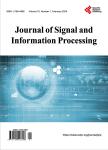DM-L Based Feature Extraction and Classifier Ensemble for Object Recognition
DM-L Based Feature Extraction and Classifier Ensemble for Object Recognition作者机构:Faculty of Computer Studies Arab Open University Industrial Ardiya Kuwait
出 版 物:《Journal of Signal and Information Processing》 (信号与信息处理(英文))
年 卷 期:2018年第9卷第2期
页 面:92-110页
学科分类:081203[工学-计算机应用技术] 08[工学] 0835[工学-软件工程] 0812[工学-计算机科学与技术(可授工学、理学学位)]
主 题:Deep Learning Object Recognition CNN Deep Multi-Layer Feature Extraction Principal Component Analysis Classifier Ensemble Caltech-101 Benchmark Database
摘 要:Deep Learning is a powerful technique that is widely applied to Image Recognition and Natural Language Processing tasks amongst many other tasks. In this work, we propose an efficient technique to utilize pre-trained Convolutional Neural Network (CNN) architectures to extract powerful features from images for object recognition purposes. We have built on the existing concept of extending the learning from pre-trained CNNs to new databases through activations by proposing to consider multiple deep layers. We have exploited the progressive learning that happens at the various intermediate layers of the CNNs to construct Deep Multi-Layer (DM-L) based Feature Extraction vectors to achieve excellent object recognition performance. Two popular pre-trained CNN architecture models i.e. the VGG_16 and VGG_19 have been used in this work to extract the feature sets from 3 deep fully connected multiple layers namely “fc6, “fc7 and “fc8 from inside the models for object recognition purposes. Using the Principal Component Analysis (PCA) technique, the Dimensionality of the DM-L feature vectors has been reduced to form powerful feature vectors that have been fed to an external Classifier Ensemble for classification instead of the Softmax based classification layers of the two original pre-trained CNN models. The proposed DM-L technique has been applied to the Benchmark Caltech-101 object recognition database. Conventional wisdom may suggest that feature extractions based on the deepest layer i.e. “fc8 compared to “fc6 will result in the best recognition performance but our results have proved it otherwise for the two considered models. Our experiments have revealed that for the two models under consideration, the “fc6 based feature vectors have achieved the best recognition performance. State-of-the-Art recognition performances of 91.17% and 91.35% have been achieved by utilizing the “fc6 based feature vectors for the VGG_16 and VGG_19 models respectively. The recognition p



